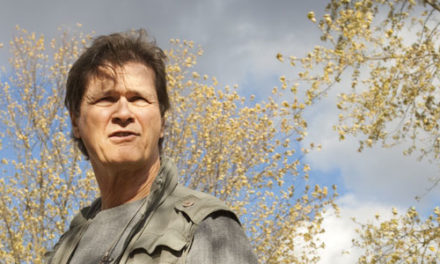
by JODY MADEIRA
Like many other social, cultural, and public health issues, firearm safety doesn’t and can’t exist in isolation from other developments, such as civil rights, ideological extremism, redistricting, national and household economic health and inequality, and health care accessibility.
What’s at stake for Bloomington in the next election mirrors what’s at stake in other American cities, due to legal design and recent history. Indiana law prohibits local governments from regulating firearms, ammunition, or firearm accessories, but contemporary events have placed the future of gun violence policy in the hands of the next president. Among the highest priorities are judicial appointments, federal and state legislation and policies towards non- enforcement social movements, funding for gun violence research and community gun violence prevention and regulating new firearms technologies.
Judicial Appointments: As of early August 2020, President Trump had confirmed three associate Supreme Court justices, 53 U.S. Court of Appeals judges, and 146 U.S. District Court judges, establishing judicial pipelines for Second Amendment reinterpretations that veer sharply toward gun rights without consideration of longstanding and lawful regulations.
Trump’s strategy has already reaped rewards. In a recent U.S. Court of Appeals for the 9th Circuit case, two U.S. judges appointed by Trump and George W. Bush cast votes on a three- judge panel to invalidate California’s voter-approved Proposition 63, banning “high-capacity” gun magazines (10-plus rounds), concluding it violated the Second Amendment. Another conservative appointee [to the Supreme Court] would swing the court heavily and irrevocably toward the right.
Federal & State Legislation: Congressional and state legislative elections will cast the dice for gun rights measures like universal background checks for all gun sales (currently stuck in the Senate for 18 months), repealing permit requirements, Extreme Risk Protection Order (ERPO) statutes allowing firearms confiscation for individuals who could endanger themselves or others, prohibitions on military-style rifles and high-capacity magazines, restoration of firearms to individuals who committed violence felonies and domestic violence misdemeanors, and concealed carry reciprocity legislation allowing one permit to be valid in all 50 states.
This election will also determine how governments handle non-enforcement movements such as Second Amendment sanctuaries, where local officials, often sheriffs, pledge to ignore regulations they consider unconstitutional, such as ERPOs. Thus far, most governors have displayed indulgence, failing to censor city councils and sheriffs who essentially pledge to not enforce duly enacted laws.
Funding for Gun Violence Research & Programming: The 2020 election will also strongly influence allocation of federal and state dollars for gun violence research and prevention. In late December 2019, Congress allocated $25 million for gun violence research—the first time in almost 20 years. This is tremendous, but sustained research programs require greater funding and robust institutional commitments. Single- year appropriations constrain research opportunities; it is difficult to get meaningful results within so short a time, and this model leaves funding futures uncertain, prompting researcher insecurities about whether funding will continue from year to year.
The future of evidence-based community violence prevention programming is also uncertain—ironic, because popular and institutional support for community violence prevention programs is high. This could jeopardize the forward momentum spurred by a 2019 House Judiciary Committee hearing on community gun violence. There, experts testified about gun violence as a public health crisis alleviated through tools like cognitive behavioral therapy, violence interruption, and focused deterrence.
Regulating New Technologies: Crucially, the election will also help to determine whether and how untraceable 3D-printed firearms will be regulated, including plan distribution. Currently, only California, Connecticut, New Jersey, and New York have passed laws addressing these “ghost guns,” but more states are likely to pursue such measures.
The 2020 election is on target to chart the future of firearms regulation and gun violence prevention.
Dr. Jody Madeira is professor of law and Louis F. Niezer Faculty Fellow at the Indiana University Maurer School of Law, where she is also co-director of the Center for Law, Society & Culture. She is the author of two books: Killing McVeigh: The Death Penalty and the Myth of Closure (New York University Press, 2012) and Taking Baby Steps: How Patients and Fertility Clinics Collaborate in Conception (University of California Press, 2018).















